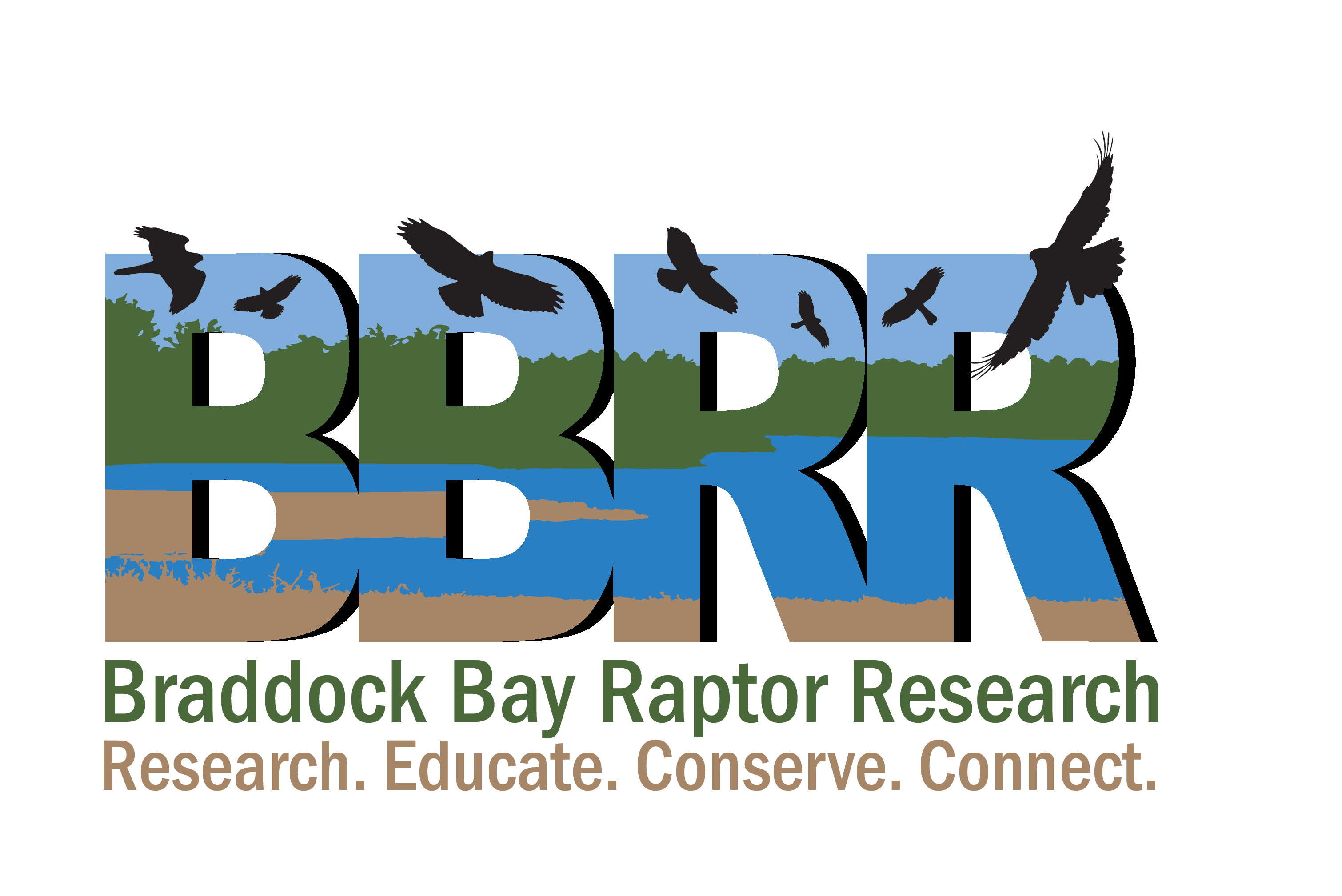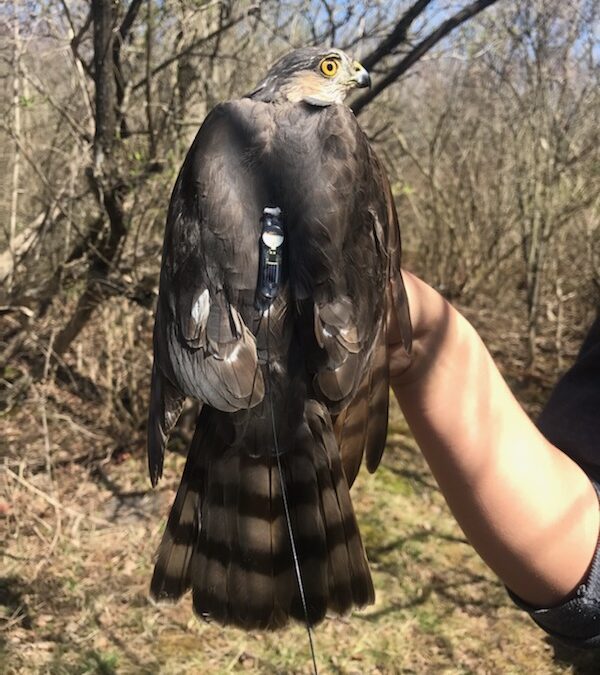Written by David Mathiason, Raptor Banding Director
Last spring, members of the BBRR banding team attached CTT hybrid tag transmitters to 24 female Sharp-shinned Hawks during the migration season. We lost contact with these hawks as they crossed into Canada, likely due to a lower concentration of MOTUS towers for them to pass by. Therefore, we do not know where they went for the summer breeding season. All we could do was wait and see how many returned to the U.S. on their way back south. As of November 3, thirteen of these hawks have returned south during fall migration. Their routes all stayed west of the Appalachian Mountains, and they seem to be settling in the southeastern part of the United States. Some came down the east end of Lake Ontario, and one appears to have come down between Lake Ontario and Lake Erie. Many of these birds seem to have crossed Lake Erie at Point Pelee, Ontario. The algorithm for tracking simply connects the dots at towers where a bird was detected and does not provide accurate tracking for its entire trip. The map below shows the southward tracks for these birds.
One of the pressing questions about studying the capillaria infection in these birds is whether it has an impact on their survival. The data collected so far does suggest that it might, but we need more data to say anything definitive.
Transmitters are being attached to Sharp-shinned Hawks this fall at two other banding stations, one at Cedar Grove Ornithological Research Station in Wisconsin, the other at Hawk Ridge Bird Observatory in Minnesota. BBRR is working collaboratively with them both, hoping to shed some light on migration patterns and trying to determine if the capillaria infections are related to those patterns.
For more information on this study, go to our Sharp-shinned Hawk Project page.


